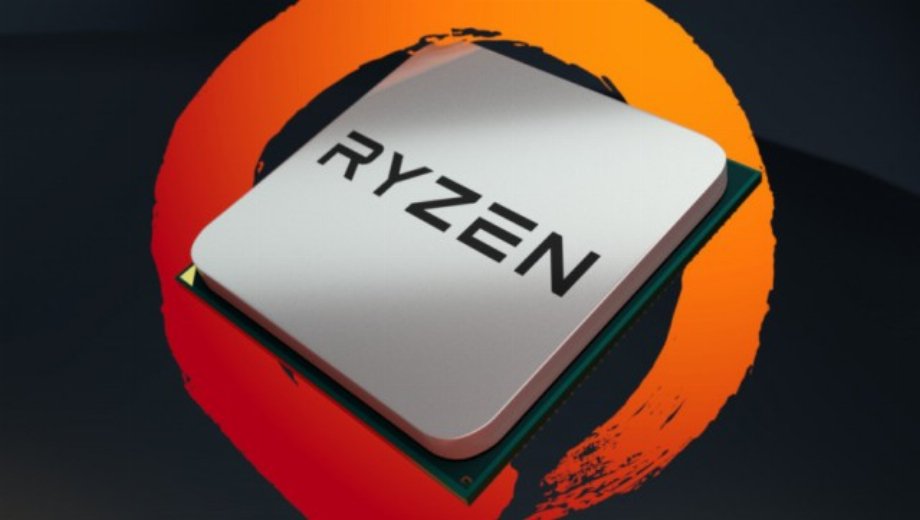How AMD stole the CPU show in 2017

Back at the tail-end of 2016 we made some predictions about what the coming year held for AMD and although Vega turned out not be quite the Nvidia competitor we hoped it would be, we were right on the money when it came to Ryzen. AMD’s new flagship CPU range has taken the world by storm and offered Intel its first credible competition in more than a decade.
Ryzen itself was a revolutionary piece of technology that managed to somehow straddle traditional AMD tenets of strong multi-core support and decent pricing, while closing the gap between it and Intel’s hardware in terms of single-core performance. While Intel arguably still holds the lead when it comes to gaming, its chips, especially at the top end, are so much more expensive than Ryzen that it’s hard to recommend its lower-thread-orientated chips over AMD’s competition.
What’s been most impressive about this year for AMD though, isn’t just its mid-range hardware, but that it brought the fight to Intel’s most powerful processors. That’s the region where Intel has dominated for so long it could effectively price its chips how it liked. That’s why if you opted for an Intel Extreme CPU just a year ago, you’d have spent more than $1,000 and closer to $2,000 in some cases. Now that Threadripper is on the scene though, everything has changed.
Now if you’re looking to buy a world-beater processor, AMD’s Ryzen Threadripper chips will cost you well under $1,000 (unless you go for the most powerful) and offer comparable performance to Intel’s top offerings. Intel was so threatened by these new chips, that it rushed out its i9 range and eventually, its recent i9-7960X. That chip is insanely powerful, offering a near 20 percent raw performance increase over anything AMD has to offer, even in its Threadripper range. It also comes with the same 16-core, 32-thread configuration of its AMD contemporaries and has all of the same multi-threaded performance they offer.
But as Ars points out, do you really want to spend almost double to gain that kind of increase? The Threadripper 1950X will set you back $1,000 which isn’t cheap, but in comparison, the i9-7960X will see you spending as much as $1,700. That’s very hard to justify for the relatively meagre improvement.
This is a major problem for Intel at the moment, as the 7960X and arguably its more expensive counterpart, the 7980XE (with its slightly higher level three cache) are the only ones which can adequately compete with Threadripper. The rest of the range are all more expensive than even AMD’s most expensive CPUs and offer far fewer cores and threads for the money. When you head into the Core i7s, which are price comparable with Threadripper, they don’t offer anywhere near the same number of PCIExpress lanes, nor the same number of cores.
As soon as you get into the mid-hundreds of pricing too, Ryzen 7 CPUs rear their heads and offer competition from the other end of the spectrum. AMD has made huge inroads into Intel’s traditionally dominant desktop CPU game in a matter of months and the chip giant is scrambling to offer credible competition. The pendulum could very much swing the other way over the next year or two, especially as we see more games adopting low-level APIs to make them more supportive of multithreading.
AMD’s plan to bring Ryzen and Vega chips down to 12nm in early 2018 will offer a few more percent improvement in performance and efficiency too, adding further fuel to the competitive fire.
The only current sore spot for AMD is that Vega line up, which promised to be a credible competitor for Nvidia’s most powerful cards, but ultimately showed itself capable of only taking the fight to cards released more than a year before them. That should mean that Nvidia’s upcoming Volta graphics cards will absolutely decimate AMD in terms of performance and efficiency. For now at least AMD does offer a somewhat viable alternative to Nvidia, especially in certain games. The upcoming Forza Motorsport 7 has been shown to deliver solid frame rates with Vega graphics, beating out even top-tier Nvidia cards in some cases, but that tends to be at lower resolutions.
It seems likely that Vega will improve over time, with further game optimizations and the upcoming 12nm die shrink helping a little, but that it will remain a more mid-range alternative than a true world beater like Ryzen.
Although 2017 hasn’t been the complete slam dunk for AMD that we hoped, it still delivered on its promise to re-enter the CPU game with stronger competition than it’s offered since the early ’00s and it seems destined to stay hotly competitive in that scene. If that leads to more sales and more revenue, we could see better investment in GPU designs in the future, which maybe brings AMD to the graphics table once again, but for now in that arena at least, it’s still playing catchup.





![Tempest Rising v20240421-v20251215+ (+23 Trainer) [FLiNG]](https://9588947a.delivery.rocketcdn.me/wp-content/uploads/2025/04/tempest-rising-1_0-464x276.png)

![Constance v1.0 (+3 Trainer) [PLAYMAGiC]](https://9588947a.delivery.rocketcdn.me/wp-content/uploads/2026/01/Constance-01-464x276.jpg)


























